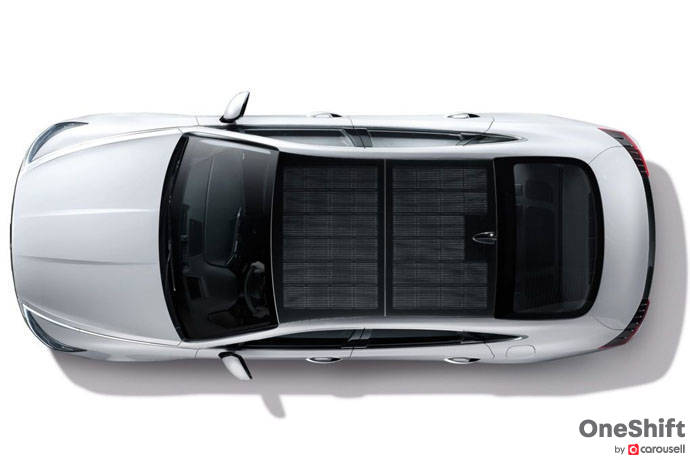Car Tech To Look Forward To In The 2020s!
Cars are ever changing, and even iconic nameplates are not spared; some have had their fair share of updates and revisions, with a few questionable redesigns blotting their otherwise illustrious history (Fox Body Mustang anyone?) As technology continues to advance, and as companies continue to push the envelope of what’s possible, these pieces of kit eventually become more financially viable for mass production, which means that what was once the realm of a dodgy prop company for a mid-noughties sci-fi movie, can now be made real and fitted to a car. Here are 5 pieces of new car tech we’re looking forward to in this decade!


Cars are ever changing, and even iconic nameplates are not spared; some have had their fair share of updates and revisions, with a few questionable redesigns blotting their otherwise illustrious history (Fox Body Mustang anyone?) As technology continues to advance, and as companies continue to push the envelope of what’s possible, these pieces of kit eventually become more financially viable for mass production, which means that what was once the realm of a dodgy prop company for a mid-noughties sci-fi movie, can now be made real and fitted to a car. Here are 5 pieces of new car tech we’re looking forward to in this decade!

Photo: Mercedes Benz
There already are vehicles on the road today with biometric systems as we currently know them as; several Chinese-market Hyundai models have had fingerprint recognition technology that allows the vehicle’s owner to unlock and start the car with the use of a registered fingerprint.
However, more biometric technology will be integrated into the cars of the not-too-distant future, especially if Mercedes’ vision of the future holds true. Their AVTR concept, showed off to the world’s press in January this year, allows the vehicle to monitor, interact with, and even change the mood of the interior cabin based on who’s onboard and what state they are in, even going as far as picking up and replicating vitals into pulsating LEDs scattered across the cabin. Sure, technology like this is still some ways off, and its practicality is still questionable at best, but other biometric technologies will become increasingly commonplace. As prices of these systems fall, new cars will be increasingly fitted with driver monitoring tech, which in theory should mean safer roads!

Photo: Hyundai
Solar panels from even the last decade haven't really been efficient enough to generate a usable amount of range in an automotive context. However, as the envelope for solar energy harvesting technology is continuously pushed, we might be reaching a stage that equipping an EV with said panels can actually create a noticeable difference to your range estimates.
Hyundai equipped their latest Sonata Hybrid with a solar roof and claims that it can add more than 1,200 kilometres of added range yearly. Whilst really not all that much in the grand scheme of things, bear in mind that it's the start of the decade, and automakers are just figuring out how to develop and integrate these panels onto their cars. Further development and optimisation should been better yields later on in the decade!

Photo: Freevalve
Could these be the saving grace for the Internal Combustion Engine? We’ve known for a really long time now, that the boffins at Koenigsegg have been working on their Freevalve Technology. To put it simply, from the block down, their engine are the same as what you’d find in any other car. However, the heads are where all the R&D money has been poured into.
Adjustable cam profiles have been around for decades now (think VTEC, MIVEC, etc), but nothing has been as revolutionary as this. The valves are operated by actuators, which can open for as long as needed. This also means that the engine can actually run on just one cylinder at startup, warming up the catalytic converter and the rest of the engine to improve emissions. It can also shut off cylinders on the fly when not needed to save some fuel as well.

Photo: Tesla
There are cars with self-driving abilities to some extent. However, the technology currently found in modern vehicles is crude compared to the Level 4 Autonomy Systems that many tech companies and automakers are working on.
With present day tech, these systems are not economically scalable, but that is set to change in the coming decade. NVIDIA, of computer graphics card fame, have created their DRIVE network, which allows independent companies to contribute to their database of the world’s roads, which can then be better applied across various self-driving or driving assistance programmes for more reliable autonomous commuting.

Photo: NIO
EVs take a really long time to charge up. Even the fastest charging cars, take at least an hour to top off from empty, far slower than a quick splash and dash will ever be. Battery swapping, in theory, could eliminate the issue and make EVs a lot more attractive to a wider range of users. However, even with a couple of big names backing such projects (Renault teamed up with an Israeli Battery Swapping Company to trial the tech), adoption, as well as the relative infancy means that it was set up for failure.
That though, should change in the near future. Chinese automaker BAIC’s subsidery, BluePark New Energy Technology, already has close to 200 of such stations across 15 major cities in China. It is currently used to support the 16,000 strong fleet of electric taxis plying their roads, but with huge government support, and the potential of luring more companies onboard, could the 2020s be the time where battery swap technology is advanced enough for widespread adoption?
#Autos #Cars #Technology
Credits: Jek Ray Low


Get the Best Price for your used car
from 500+ dealers in 24 hours

- Convenient and Hassle-Free
- Consumer Protection
Transparent Process
With No Obligation








